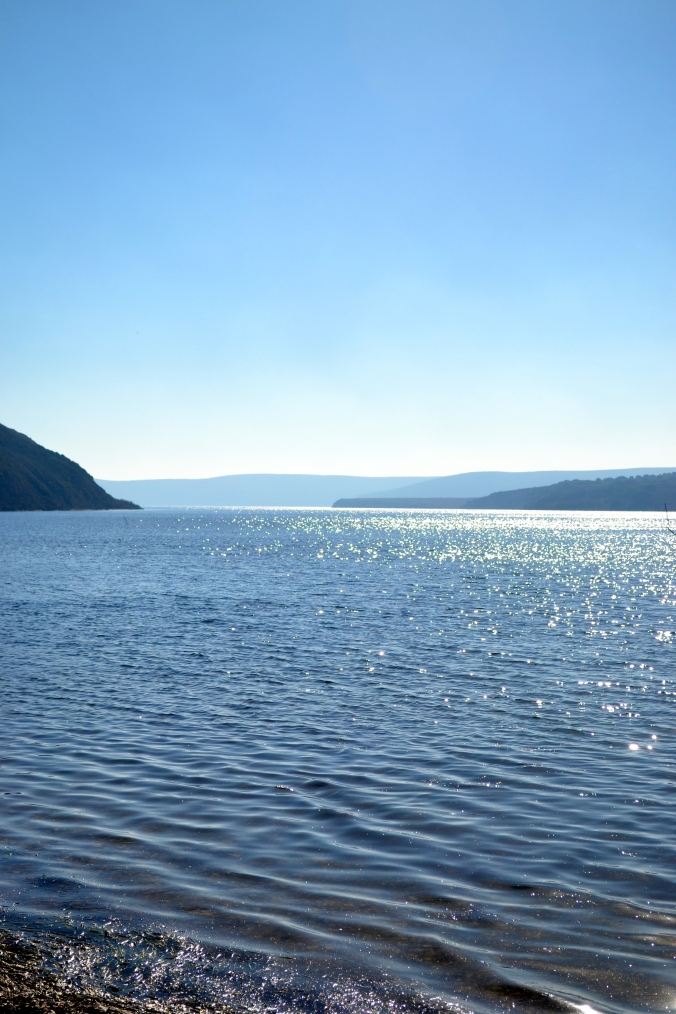A recent visit to Pt. Reyes National Seashore was so spectacular that it’s taken me several weeks to edit my thoughts down to manageable proportions. The convergence of intriguing history with spectacular natural beauty holds the power to overwhelm.

Pt. Reyes National Seashore ia a huge park preserve located on the Point Reyes Peninsula in Marin County. The peninsula is geologically separated from almost all of the continental U.S by a rift zone of the San Andreas Fault, resulting in differing tectonic plates. The result of the geologic shifting is the emergence of different soils and vegetation creating abundant diversity along the wild coastal beaches, headlands, estuaries and cliffs.



Even this algae seemed special. I had to walk over and inspect this unusual color and pattern.


Trentepholia, rust-colored algae sometimes called “rock violets,” was surprisingly beautiful on the face of the rocky cliffs.
Everything about this very special location just north of San Francisco truly inspires and invigorates me. I’m always at home with marine protected areas and anytime I’m surrounded by “wilderness” I’m at peace.

I was thrilled to see tule elk. We were alone on the highway and able to stop the car and just watch them for a few minutes.

Tule Elk are native to the area and served the Coast Miwok people who lived on the Point Reyes Peninsula before it was colonized by European settlers. Loss of habitation eventually led to extinction in this area, but tule elk were reintroduced in 1978.
Walking the trail leading to the historic Point Reyes Lighthouse was lovely.


So are you wondering what this has to do with Elizabethan history? I have been so eager to share about this.
About three years ago I read an article in the newspaper that really caught my interest. The headline was “Point Reyes declared Drake landing site.”
For years and years and years there has been no shortage of controversy as historical societies have researched the specific location where Sir Francis Drake anchored along the west coast of the New World.
In 2012 the federal government ended the controversy by recognizing a cove on the Point Reyes Peninsula as the site where Drake landed in 1579 and claimed California for England. Now why this isn’t as historic as Plymouth Rock, as the late Fleet Adm. Chester Nimitz questioned, is a mystery to me.

On December 13, 1577, Drake left England with five ships headed to raid Spanish holdings on the Pacific coast of the New World. His circuitous route took him in many directions, but it is believed that in 1579 he landed in a cove off the coast of California to repair his ship, the Golden Hind, which was badly leaking.
He recorded that on June 17, 1579, he sailed around the hook of an unnamed point of land, making contact with the local people, presumably the Miwok, repaired his ship and claimed the land for Queen Elizabeth.

Had you heard this story before? This would be a good jeopardy question:
“This 16th century explorer called Northern California New Albion and claimed it for England.”
I absolutely loved this little adventure. It wasn’t possible to explore all 71,028 acres of the Pt. Reyes National Seashore in one weekend, so there’s definitely a return trip in my future.
I may not be very adventurous on the high seas, but curiosity fuels another form of exploration. I have a fresh interest in Sir Francis Drake so will probably ride out the winter reading more about Drake and his intersection with beautiful Pt. Reyes, and then in the spring, I’m heading back for more.

Next week, we’ll talk about shipwrecks. It isn’t often I can share 16th century California so I’m not passing on the opportunity.